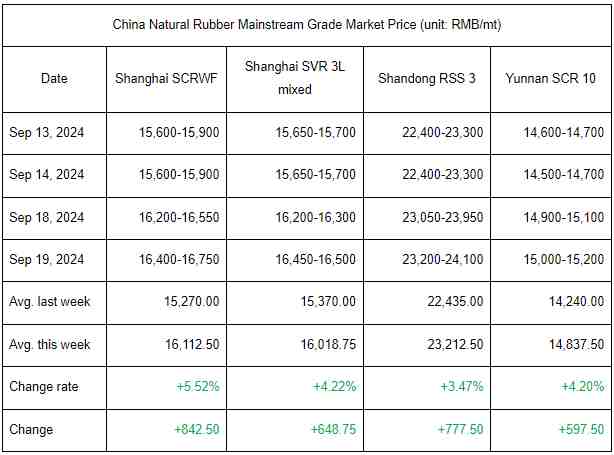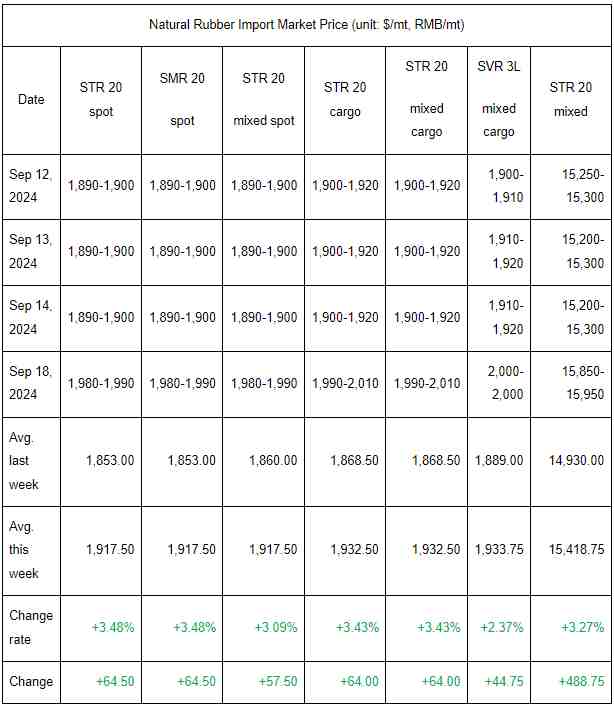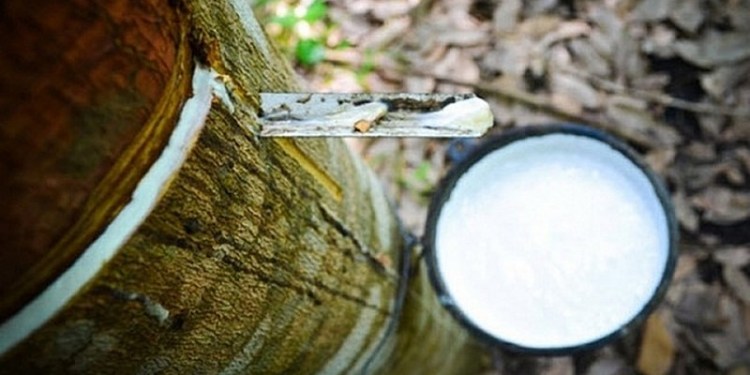

Market Review
Prices of RMB-denominated natural rubber spot resources perked up this week. Prices of Shanghai natural rubber futures were robust, especially on the first day after the Mid-Autumn Festival holiday, the main contract hit a new high since April 2017, strongly driving the spot market. Besides, the strong rainfall in China’s domestic and foreign producing areas caused the supply growth to be less than expected, propping up the price. Moreover, the continuous decline in spot inventory underpinned the bottom of the price. However, under the high feedstock price, the transactions in the spot market were mainly arbitragers’ addition to positions. Most downstream enterprises maintained a wait-and-see attitude due to high costs, and only a few downstream enterprises replenished stocks on rigid demand, so the overall trading atmosphere was weak.
Market Forecast
Forecast: China’s natural rubber market may be range-bound next week. On the one hand, the bottom of the natural rubber price will still be strongly supported by the supply side. The release of new field latex output may be limited in Northeast Thailand due to the rainfall. Thus, the feedstock price is likely to remain firm, leading to a high cost. On the other hand, the end markets are tepid, so downstream tire enterprises will also show low buying interest. In addition, arbitragers’ addition to positions will hinder the peak of natural rubber prices, and the capital risk aversion will increase as the National Day holiday approaches. Therefore, a drop in natural rubber prices from high levels cannot be ruled out. It is estimated that the weekly average price of SCRWF in Shanghai may be RMB 16,000/mt, and its mainstream prices may be in the range of RMB 15,700-16,500/mt. Players should pay attention to the impact of macro commodity co-movement on the natural rubber market.
Supply: In the short run, rainfalls in China’s and overseas producing areas are likely to disturb the output release of new field latex. Affected by abnormal weather, players may worry about the status of supply release. Meanwhile, the natural rubber resources flowing to the warehouse may be limited, but downstream enterprises will restock on rigid demand, so the spot inventory will likely continue to decline, which will significantly support the natural rubber price.
Demand: Due to average end demand, downstream tire enterprises may show thin purchasing appetites under high cost pressure. Thus, the demand may hardly see increments. Besides, it is heard that the rigid demand in the international tire market may slow down, curbing the natural rubber price.




























